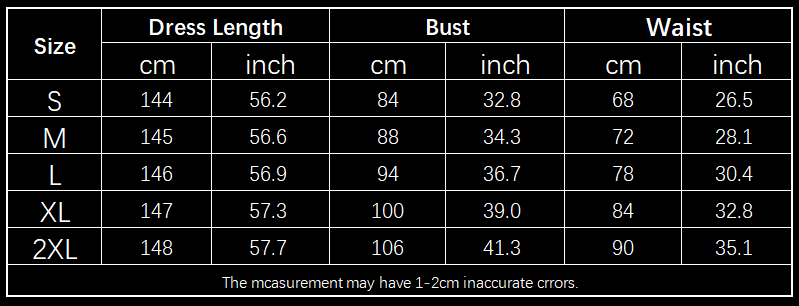.....Great coupon Offers Today & Everyday.....
Coupon code and discount offers check now and use to save money & share google social blog : online event work health learn advices , new articles services shopping items ebay amazon etsy shopify facebook twitter linkedin instagram groups we are searching internet and post useful words for friends , earn ebook programing soft ware computer car automotive usa canada eu uk Au and international to be world useful blogs magazine news text and graphics friendly with more thanks
Friday, November 28, 2025
Saturday, November 8, 2025
Get 100Sound & text E Books Treasure ! Health food winter summer peace skills SEO earn internet social gift money
Friday, September 12, 2025
Learn aspects of Holographic Health’s amazing categories, philosophies, systems
Bentley Method Foundational Seminar
October 17–19, 2025
DoubleTree by Hilton Denver Cherry Creek 455 South Colorado Blvd. Denver, CO 80246
Learn aspects of Holographic Health’s amazing categories, philosophies, systems, and approaches to healing.
Website: https://beachtownathleticclub.com/#event-section
HAVE YOU EVER WISHED YOU COULD BE MORE
CONFIDENT?
LEARN HOW TO FIGHT LIKE NAVY SEALS!
LEARN WHAT THE BAD GUYS DON’T KNOW!
PROGRAMS DESIGNED TO EMPOWER ADULTS, TEENS, & CHILDREN, ESPECIALLY WOMEN!
LEARN THE GREATEST ADVANCEMENTS IN COMBAT & HEALING ALL IN ONE PLACE!
Register at :
Wednesday, July 16, 2025
World Peace Products & Services
The WORLD PEACE PRODUCTS AND SERVICES EXPO AND
CONFERENCE
Sunday, September 21, 2025 , 12:00–19:00 UTC (7 hours)
**The Peaceism Ecosystem Framework**
Our event is structured around seven foundational pillars that form the Peaceism Ecosystem:
- Sustainable job creation models
- Future skills development programs
- Social entrepreneurship incubators
2. **Food Security & Sovereignty**
- Regenerative agricultural practices
- Equitable food distribution systems
- Universal healthcare access models
- Mental health integration frameworks
4. **Housing & Sustainable Communities**
- Affordable housing innovations
- Disaster-resilient infrastructure
5. **Education Transformation**
- Lifelong upskilling initiatives
6. **Justice & Equity Systems**
- Transparent governance technologies
- Human rights protection frameworks
7. **Safety & Global Resilience**
- Conflict resolution methodologies
- Disaster preparedness systems
✓ Corporate sustainability leaders
✓ NGO and community organizers
Tuesday, July 15, 2025
The WORLD PEACE PRODUCTS AND SERVICES EXPO AND CONFERENCE
The WORLD PEACE PRODUCTS AND SERVICES EXPO AND
CONFERENCE
Sunday, September 21, 2025 , 12:00–19:00 UTC (7 hours)
+971585851788
serves as a premier global platform uniting governments, businesses, NGOs, academia, and thought leaders to advance sustainable development through the Peaceism Ecosystem. This virtual gathering will showcase peace products and services, innovative solutions, foster cross-sector collaboration, and create actionable strategies to address humanity's most pressing challenges.
**The Peaceism Ecosystem Framework**
Our event is structured around seven foundational pillars that form the Peaceism Ecosystem:
1. **Employment Revolution**
- Sustainable job creation models
- Future skills development programs
- Social entrepreneurship incubators
2. **Food Security & Sovereignty**
- Regenerative agricultural practices
- Smart farming technologies
- Equitable food distribution systems
3. **Healthcare for All**
- Universal healthcare access models
- Mental health integration frameworks
- Preventive care ecosystems
4. **Housing & Sustainable Communities**
- Affordable housing innovations
- Eco-urban development plans
- Disaster-resilient infrastructure
5. **Education Transformation**
- Digital learning platforms
- Peace education curricula
- Lifelong upskilling initiatives
6. **Justice & Equity Systems**
- Transparent governance technologies
- Restorative justice models
- Human rights protection frameworks
7. **Safety & Global Resilience**
- Conflict resolution methodologies
- Disaster preparedness systems
- Cybersecurity solutions
### **Who Should Attend?**
✓ Government policymakers
✓ Corporate sustainability leaders
✓ Social entrepreneurs
✓ NGO and community organizers
✓ Academics and researchers
✓ Impact investors
✓ Technology innovators
WA
+971585851788
+601111816888
peaceism.org@gmail.com
Peace Project
Peace project is a platform that onboards real world projects that generate value and health. This project aims to provide every natural person an automatic entitlement to the value created by the platform. The distribution of value is through the blockchain. Projects can be onboarded on this ecosystem to generate value and contribute towards the various niches that are necessary to humans’ very existence.
Peace platform is an open sourced decentralized platform that grants ownership to humans irrespective of creed, race, social background, beliefs and nationality. The peace project is an altruistic platform that aims to liberalize the economy by giving everyone access to the global economy.
The aim is simple, to bridge the inequality that exists today and to bring wealth to any human being without any condition, prejudice or limitation. This project is not only a one way distribution of wealth, it also allows meaningful projects to to be seeded, funded, and supported through the peace ecosystem.
+971585851788
+601111816888
peaceism.org@gmail.com
Sunday, May 11, 2025
Robe longue fendue imprimé rose mode vêtements pour femmes style féminin familial
Rose Print Split lang kjole Sommer Mote dameklær kvinnestil familie gps
Sunday, January 19, 2025
Online Marketing for your business website get more sales & daily traffic new
Great promotion For your website , products and business
I will invite new customers to increase your sales and grow your business
marketing plan steps:
* We will make advertising campaigns to increase daily traffic & alexa rank with all search engines
* Create and manage social media accounts
* Promote the social pages with posts related to your business
* Video marketing works for your business at youtube, vimeo ..etc.
* Search work for new email lists related to your products daily
* Design HTML Templates and send periodic emails
* Manage PPC campaigns at google adwords facebook & linkedin
* SEO & link building work to put your keywords at good positions
* Post Articles and blogs also sharing the related blogs and articles
* The Available Affiliate management work to increase your sales
* Design banners and put at high traffic sites
* List your business and get local customers
* Create shopping items at the famous shopping sites
* items for sale in groups
thank you
Tuesday, January 14, 2025
I will submit your event best sites ticket sale calendar america venue seminar market
best local events websites submissions for your event
Let us help you to get more registrations and sales
i will promote your events on sites and groups of high traffic members
submit your new event to the best websites
Social Networks shares and invitations
Classified sites and ads posts
and more to get more watchers and people visitors
we are expert of marketing works
we know events are great local services
we will be happy to help you and all events owners
* we do research work to find people and websites in your event location
* we invite people directly using messages and social media invitations
* we submit your event on the event websites related to your location
* we create blogs and post for you with the link to your event site and tickets link
* posting classified ads for event as you want
* forwarding the people responses , requests and discussions for you
* Press Release , you will find the best advertising and marketing results , we are expert
we will be happy to help growing your business and to get more sales and tickets registration
Read and Earn Money from Reprint , buy this ebook $0.9 available
https://www.ebay.com/itm/315098585403 Offer at: https://www.ebay.com/itm/315098585403 Order now https://www.ebay.com/itm/315098585403...

-
Save on your next order of our cheap bookmark printing product online at 55printing.com Taxes & Shipping not included - Expire Novem...
-
Ich werde Ihre Veranstaltung einreichen. Beste Websites, Ticketverkaufskalender, Amerika, Veranstaltungsort, Seminarmarkt Beste lokale Ver...
-
A Chip Bag Resealer $16 for 2; buy now at amazon.com Given how popular potato chips are—we collectively consume 1.2 billion p...

















